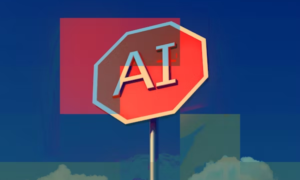Diving into digital art and design opens up a vibrant world where creativity merges with the latest technology. For those just starting out, this field offers endless possibilities to express ideas, emotions, and stories in new and compelling ways. Whether your interest lies in graphic design, illustration, or digital painting, taking the first step can be both exciting and a bit overwhelming. However, with the right guidance and tools at your disposal, anyone can begin to unlock their creative potential and start bringing their unique visions to life. In this blog, we will cover the foundational elements of digital art and design, providing tips, techniques, and insights to help you start your creative journey with confidence.
1. Understanding Digital Art and Design
Digital art and design encompass a broad spectrum of creative expressions produced with digital technology. At its core, it involves using software and hardware to create artworks and designs that exist primarily in a digital format. This section explores the basics, shedding light on how digital art differs from traditional art forms and the various types of digital designs, from illustrations to 3D models, that beginners can explore.
2. Tools of the Trade
Every artist needs their tools, and in the digital world, these range from sophisticated drawing tablets to powerful software programs. This segment introduces the essential tools that budding digital artists and designers will need, including recommendations for starting equipment. While the choice of tools might seem daunting at first, understanding what’s available can significantly ease the transition into digital creation.
3. Pursuing a Formal Education
While there are plenty of resources out there for artists who teach themselves, going through formal schooling gives you a more organized way of learning about design and art basics. If you’re aiming for a job in the field, getting a Bachelor of Fine Arts (BFA) in Graphic and Communication Design can give you a thorough understanding and access to the tools and methods commonly used in the industry. More than just learning, this path provides critical evaluations and insights from seasoned professionals, propelling your artistic growth. It’s a good idea to look up graphic design BFA online to get more insights.
4. Self-Learning and Online Resources
The internet is a treasure trove of learning materials for aspiring digital artists and designers. From free tutorials to comprehensive online courses, self-motivated individuals can find a wealth of knowledge at their fingertips. This part of the guide emphasizes the importance of self-directed learning and how to effectively utilize online resources to build and hone your digital art and design skills.
5. Fundamental Design Principles
Understanding the fundamental principles of design is crucial for creating visually appealing and coherent works. This section breaks down key concepts such as balance, contrast, and harmony, providing a solid foundation for beginners. Grasping these principles will enable artists to craft designs that not only look good but also communicate effectively and evoke the desired response from their audience.
6. Experimentation and Finding Your Style
The journey into digital art is not just about mastering tools or techniques; it’s also about discovering and refining your unique style. Experimentation is key. Try different mediums, experiment with various software, and don’t be afraid to blend unconventional elements. This process of trial and error is invaluable. As you explore a range of styles and techniques, you’ll gradually uncover your artistic voice—a reflection of your personality and perspective that sets your work apart.
7. Building a Digital Portfolio
A well-curated digital portfolio is your gateway to the world. It showcases your skills, your range, and your unique style to potential clients, employers, or educational institutions. Start by selecting your strongest pieces, ideally those that demonstrate a variety of skills and concepts. Organize your portfolio in a way that it tells a story, your story. Regular updates and refinement ensure your portfolio remains fresh and relevant. Remember, your portfolio is often the first impression you make; make it count.
8. Networking and Community Engagement
No artist is an island. Engaging with a community of fellow digital artists and designers can be incredibly enriching. Online forums, social media platforms, and local meetups offer opportunities to connect, share ideas, and receive feedback. Networking can also open doors to collaborative projects, exhibitions, or job opportunities. Being active in a community fosters a sense of belonging and can be a powerful source of inspiration and motivation.
9. Monetizing Your Art
Turning your passion into profit is a dream for many artists. The digital domain offers numerous avenues to monetize your art, from freelance projects and commissions to selling prints or digital downloads. Platforms like Etsy, Patreon, and social media can help you reach a wider audience. It’s important to value your work appropriately and understand the basics of contracts and copyright laws to protect your creations. Diversifying your income streams can provide financial stability, allowing you to focus more on what you love doing.
10. Staying Inspired and Motivated
Maintaining inspiration and motivation is crucial for any creative endeavor. Set realistic goals, seek out new sources of inspiration, and don’t be too hard on yourself. Understand that creative blocks are part of the process. Finding a balance between work, learning, and personal time is essential. Surround yourself with supportive people who understand your creative journey. Growth as an artist is a continuous process, filled with ups and downs. Embrace it.
Conclusion
Learning digital art and design is an adventure filled with discovery and creation. From experimenting with styles to building a digital portfolio and engaging with the community, each step you take enriches your journey. The essence of being an artist lies in continuous exploration and expression. As you navigate through challenges and celebrate achievements, keep pushing the boundaries of your creativity. Let your passion drive you, and always be open to evolving your craft. The world of digital art is vast and ever-changing, offering endless possibilities to those willing to explore. So, dive in, create with heart, and let your art shine.



































